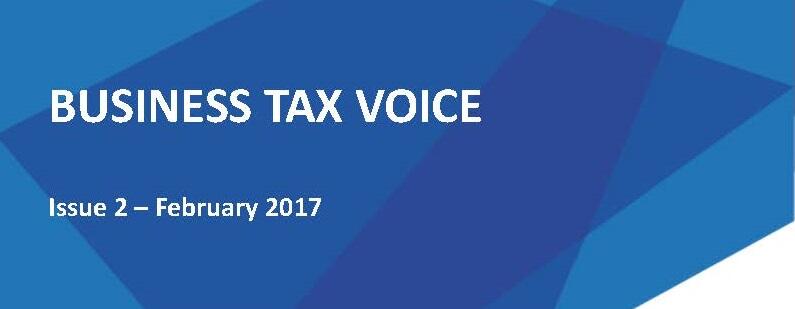Chair's view, Issue 2

Welcome to issue 2 of Business Tax Voice
In this issue we have a number of articles covering a variety of issues, from some general comments about the recent Autumn Statement and draft Finance Bill clauses through to a detailed technical note on a current entrepreneurs’ relief issue. As well as the articles themselves, it is important to see how they fit into the context of the Business Tax Road Map, published in March 2016. Then, the government stated an ambition to make the UK’s corporation tax regime the most competitive in the G20, an ambition which is arguably made more urgent by the vote to leave the EU. The intention is to underpin the new approach with 5 principles providing a direction for reform: lowering rates while maintaining the tax base, maintaining stability, maintaining a level playing field for all taxpayers, being aligned with modern business practice and avoiding complexity.
Without intending to start a political debate, I am fairly certain we can more or less ignore the last bullet point as being a laudable but impossible ambition, as all tax systems are necessarily complex particularly if they are intended to be aligned with modern business practices, which are certainly not getting any simpler!
The Business Tax Road Map refers to lower rates of corporation tax allowing more of the profits of a business to be reinvested or invested in new businesses. Reinvestment is obviously reinforced by increasing the rates of income tax on dividends, i.e. the amount of tax on profits extracted from a company. The Road Map also highlights other ways in which tax is reduced, such as creative sector tax reliefs, incentives for research and development and exploitation of patents, general incentives for plant and machinery acquisition and incentives to invest in shares of start-up companies. In this context, David O’Keeffe has contributed an article on the R&D tax regime, highlighting some known changes and the fact that the regime is under review.
The government’s view of levelling the playing field appears, as much as anything, to be about their anti-avoidance work and the base erosion and profit shifting (BEPS) project. Both of these are seen as maintaining the tax base i.e. making sure that everyone pays their “fair share” of tax. It is perhaps unfortunate, however, that the result has been an over emphasis on ensuring that tax is paid according to the current rules, rather than reviewing the policy behind tax legislation and considering whether, in some areas, the amounts of tax being charged is, in fact, unfair. I comment on this, myself, in my article, highlighting, for example, the fact that there are elements of partnership taxation and areas within the stamp duty and stamp duty land tax rules where reviewing the policy might lead to greater fairness than just reviewing the minutiae of how the tax is charged or paid.
Similarly, Peter Rayney has written a fascinating article on a problem that has arisen with a company purchase of own shares, where multiple completion dates are used because the company does not have enough cash to make an upfront payment of the full amount. This is a mechanism that has been in place for many years and which HMRC has accepted as being a way of getting around the requirements of company law for a company purchase of own shares, without losing out on the intended tax benefits of the relief. However, HMRC appears to be challenging these multiple completions on the basis of whether entrepreneurs’ relief should apply, which again appears to be consideration of the minutiae of the legislation and not whether in fact their approach gives rise to fair taxation.
The message here is that levelling the playing field and maintaining the tax base is all very well, but it works much better if the rules underpinning the tax base are sensible, logical and consistent.
In terms of modern business practices, everyone should read Deb Oxley’s article on employee ownership of businesses. This explains how wider employee ownership is an important developing area, which is supported by changes in the tax code.
On a more technical level, Christopher Lallemand’s article on tax and accounting for financial instruments looks at the impact of the changes of accounting practice and the impact on the taxable profits of companies. This might sound very abstruse but the new accounting rules may have an impact on company distributions and loans to shareholders and may be more relevant than many think.
Overall, a mixed bag of articles on a range of subjects this time round, but all of them, deliberately or otherwise, highlighting certain aspects of the Business Tax Road Map.


